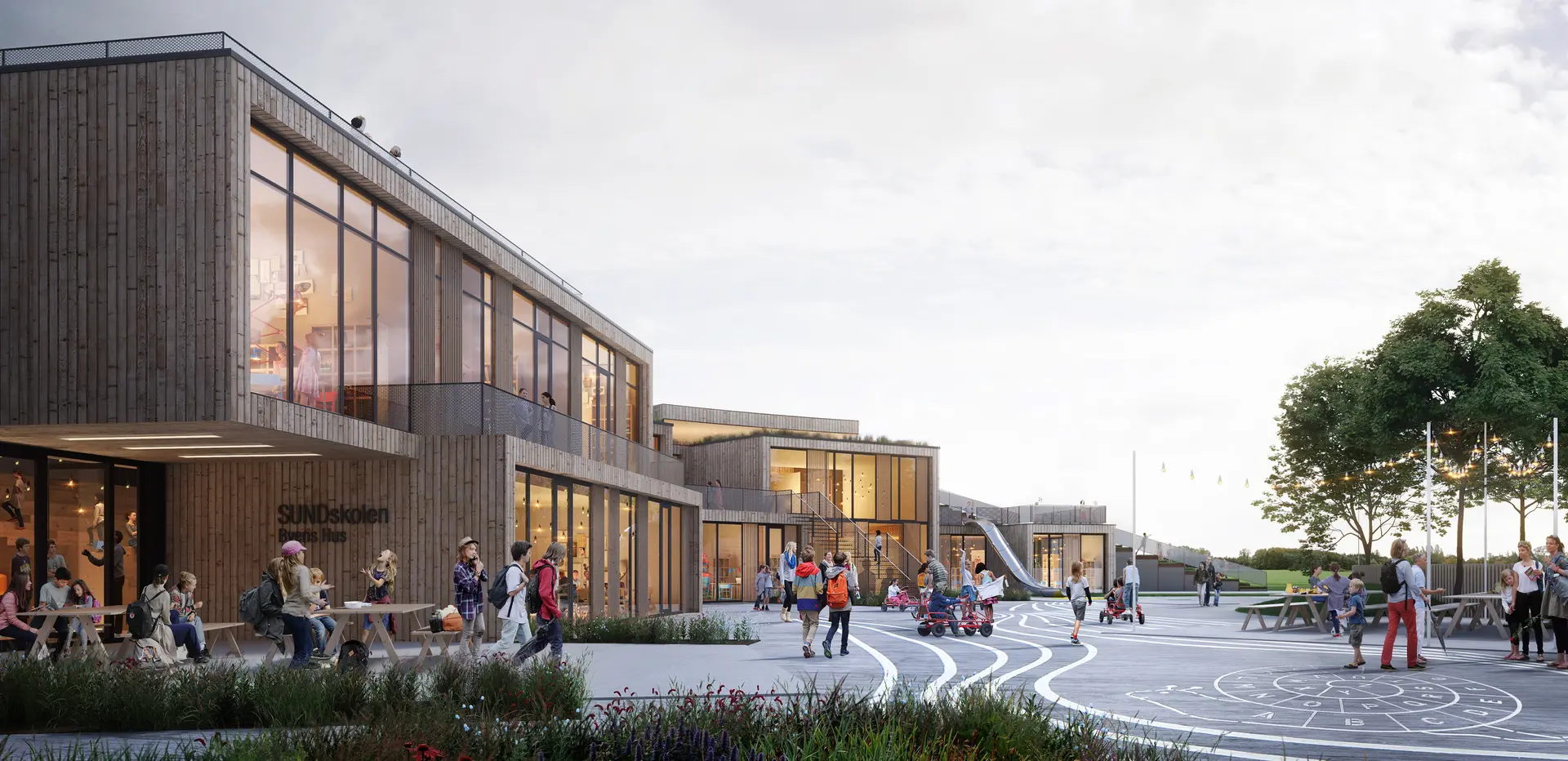
Kristiansand, Norway
2023 - 2026
Lauvåsen Secondary School
With its associated schoolyard, sports hall, and football field, Lauvåsen Secondary School – known as “the Clearing” – will accommodate 375 students. Constructed with wood as the main material, and featuring a rooftop that echoes the form of nearby hills while incorporating native greenery and stormwater management strategies, the building is designed with its natural surroundings in mind.
Nestled within the scenic woods of Kristiansand, Norway, Lauvåsen Secondary School keeps the needs of people and nature at its core. The school’s landscape design is conversational, bringing nature into the schoolyard while simultaneously extending it into its surroundings. This interaction benefits the schoolyard by establishing areas for active play and peaceful retreat – a space for students, community, and biodiversity to thrive together.
Constructed partially with glulam, the school features a low-carbon design and subtle profile that blends seamlessly into the terrain. "The Clearing" brings educational, recreational, and community spaces to Lauvåsen while preserving its most valuable feature – nature. With the building occupying around 8% of the total site area, the design prioritizes landscape conservation through thoughtful placement, a minimal footprint, and the use of multifunctional solutions and natural materials. Careful planning has ensured the full preservation of the site’s wetland areas, which store 388 kg CO2 e/m2 – nearly offsetting the 400 kg CO2 e/m2 associated with the school’s construction.

Formed by the forest
The wooden school’s design reflects its close proximity to the surrounding forest, inviting the outdoors inside and encouraging an active, outdoor attitude among students.
Positioned at the site’s edge, the structure is enveloped by trees, forging a connection between the schoolyard and the forest. Winding paths weave through the landscape, linking the school with its recreational facilities and creating small pockets within the woods. These spaces offer areas for both activity and relaxation, along with views of the surrounding natural environment.


Designed for biodiversity
Geared towards reducing its carbon footprint, the school aims to preserve the existing ecosystem and vegetation through the incorporation of native flora in its landscape strategy. By lifting greenery on top of the roof, the design engages with its landscape, while minimizing the building’s direct impact on the land. The roof is made up of a combination of this green roof and solar panels, incorporating a renewable energy source into the design.
Growth is prioritized in the design, with vegetation and water integrated to enhance biodiversity and support local wildlife. The building’s roof, shaped to imitate the contours of the surrounding hills, is planted with native species that contribute to both stormwater management and ecological diversity. Rain gardens and waterways guide water through the schoolyard, connecting the stormwater system to the existing wetland and stream.


Contact
All contacts
Architect

Architect, Landscape Architect

Landscape Architect
Next project
Sundby School
Explore project